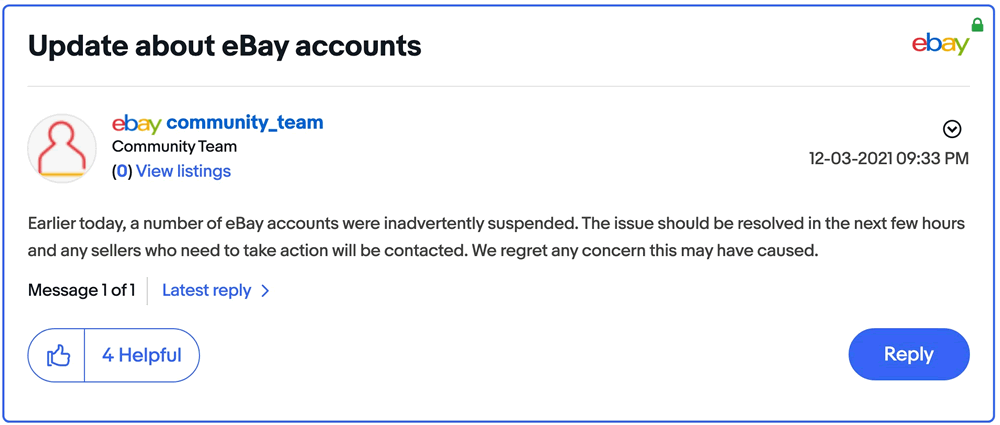The Web Retailer News Digest for December 10th, 2021
If you sell on Amazon, you’ve probably noticed you’ve been spending more and more on fees and services over the last few years to stay competitive in the marketplace.
It turns out that you’re not the only one – and that the combined total of these costs has become Amazon’s primary source of income. According to a new report by the Institute for Local Self-Reliance (ILSR), Amazon makes significantly more money through fees on its Marketplace platform than it does from its cloud services business AWS, which is usually seen as the mega-corporation’s main revenue stream.
ILSR estimates that Amazon will earn $121 billion in fees and advertising payments from sellers in 2021, accounting for nearly 34% of those vendors’ total earnings. The ILSR’s research indicates that Amazon may have generated Marketplace profits to the tune of $24 billion in 2020, significantly more than the $13.5 billion reported for AWS that year.
Unsurprisingly, the results of the research are disputed by the corporation. The report indicates that the Marketplace has been Amazon’s primary profit source for some time, hidden behind creative accounting practices, unregulated service offerings, and financial opacity.
While at first glance, this seems like a black and white case of exploitation and monopoly, on further examination, it’s a bit more complicated. Let’s take a deeper look at the perspectives for Amazon, for sellers, and what it might ultimately mean for the marketplace.
Amazon seller fees hit 34% of sales
Amazon argues that the ILSR’s reporting that it keeps one-third of seller revenues is inaccurate, and that not all of the seller charges counted constitute “fees.”
In terms of fees, Amazon does charge professional sellers $39.99/month, plus an additional 8-15% per item referral fee for each item sold, with the percentage variable depending on the product category.
But it rather convincingly categorizes other “fees” as “optional add-on services”, including FBA, PPC advertising, and providing customer service for non-FBA sellers. Amazon’s position is that they provide these services to help sellers with the tools they need to be successful. Because of the optionality of these services, Jeff Bezos categorized them before the US Congress as “somewhat of an optical illusion” of high seller fees.
But what is a mirage to Jeff Bezos is all too real to Amazon sellers. To be successful in the cutthroat Amazon ecosystem, many sellers must avail themselves of these services or perish. For example, not having the Prime badge will result in far fewer sales. But the only way to get the Prime badge is by using FBA or SFP, and SFP is exceedingly difficult to get into. So is FBA even optional?
Another example is that more and more Sponsored Products have taken up the first-page listing space for many categories. How will a seller’s product have a chance to show up on that first page without paying for Amazon advertising? And with Amazon handling your fulfillment, advertising, customer service, and more, it begins to feel like you are being monopolized.
So while both sides make fair points, what it comes down to for most sellers is that they are paying a substantial amount of their revenues to essentially become another type of Marketplace worker, one that happens to source and market products for Amazon.
On the other hand, Amazon believes they provide opportunities and the needed tools for anyone to run a flourishing ecommerce business in their Marketplace. With the FTC bringing more scrutiny towards Amazon, the future could bring regulatory changes that level the playing field – or just more of the same. Only time will tell.
Read more at TechCrunch.
AWS outage brought down delivery network
In a coincidental connection to our lead story, on Tuesday, December 7, AWS suffered an unprecedented, hours-long outage. AWS is currently the leading provider of cloud infrastructure technologies for large and small enterprises, controlling 33% of global cloud infrastructure.
The outage also affected Amazon fulfillment services in parts of the US. The outage took down warehouse bots such as package scanning and delivery route apps used by drivers and fulfillment workers.
Other internal Amazon services affected included Seller Central, Alexa, Kindle eBooks, Ring doorbells, and more. Popular websites and widely used services were taken down, including Disney+ and Netflix, along with more unexpected victims such as Roomba vacuums and Tinder.
Happening in the midst of peak holiday gift delivery season, the outage was costly for sellers, retailers, and Amazon – as well as inconvenient for customers and leading to drivers sitting around until the outage was resolved late in the day.
I’m an Amazon driver and the outage is also hitting us and we can’t make deliveries, so we’re just playing karaoke pic.twitter.com/QoLR8wZKhC
— Kool Sweety (@Kool992704) December 7, 2021
[script script=”{script async src=’https://platform.twitter.com/widgets.js’ charset=’utf-8′}{/script}”]
There is, of course, a touch of irony in the idea that package delivery, an inherently physical activity involving boxes, trucks, and humans, could come to a standstill based on the failure of technology that tells the drivers where to go, who to deliver to, and how to do it on time.
The AWS outage is among many internet provider service outages to take place this year, highlighting the seriousness of the difficulties that can occur when so much economic activity is dependent on technology from a few providers.
Read more at CNBC
eBay accidentally suspends seller accounts
Some unfortunate eBay sellers experienced their own “glitch in the matrix” on Monday, December 3, when eBay suspended their accounts for, well, no one actually knows why. And if they do, they’re not telling.
Sellers complained about the mystery suspensions on Twitter and Reddit, but eBay was not quick to come forward with answers.
Finally, at 9:33 PM, eBay issued a brief statement saying only:

The entire incident appears to have been an accidental tech glitch, which kicked certain eBay sellers off the platform without immediate recourse or explanation.
Our friends at Value Added Resource bring up the excellent point that eBay owes sellers and customers full transparency, especially if it wants to be “the trusted platform of choice for buyers and sellers”. As you might expect, there were more than a few upset sellers on the message boards, and wild speculation abounded about what actually happened.
Meanwhile, the whole incident sparks many questions: Was it a hack? A rogue AI algorithm gone awry? Server failure? Will suspended sellers be reinstated without penalties and with full restitution for any lost business or expenses incurred? And how does that work for sellers?
Most importantly, can eBay assure all concerned parties that it fixed the “glitch” – and that it won’t happen again? While the occasional tech outage is part of the cost of selling on the internet, permanently suspending ecommerce seller accounts is serious business, and should be treated by eBay as such.
Read more at Value Added Resource.
Also in the news
- Amazon is making its own shipping containers. CNBC.
- Abandoned shopping malls won’t be saved by Amazon. WSJ.
- Amazon combines Marketplace Appstore with Service Provider Network. Amazon.
- eBay raises concerns over federal tax law changes. eBay.
- eBay adds public sales count to eBay Stores. EcommerceBytes.
- Meta prioritizes investments into shopping on Facebook and Instagram. Business Insider.
Webinars in the week ahead
For everyone
December 15: Amazon Advanced PPC Webinar. Sellics.
December 16: eBay monthly seller check-in. eBay.
Various dates: Amazon advertising’s global webinar program rolls on with 20+ webinars scheduled, covering Sponsored Products, Sponsored Brands, reporting, optimization and tips. Amazon.
For US sellers
December 15-16: 2022 Digital Marketing Panels. Tinuiti.
And finally…
eBay launches interactive 3D sneaker viewer – what’s next?

Sneakerheads rejoice! The next time you are cruising the eBay marketplace trying to track down that elusive pair of $14,617 moon-boot Nike Air Mags, you will be able to view them in the latest viewing sensation known as 3D.
Yes, you heard right, do not adjust your televisions. eBay has partnered with Unity, the dominant platform for producing and deploying interactive, real-time 3D (RT3D) content around the world to bring you the most shoe-sational sneaker viewing experience of the year – eBay 3D True View.
It allows you to view sneakers from any angle in all three dimensions (just like real life!). The phone app-based tech allows sellers to upload life-like images of sneakers for sale, and buyers can view them from the comfort of their sofa in an interactive, HD format.
The AI-powered tech (Rejected name: Sneakernet) is designed to compete with eBay’s rival in vintage sneaker sales, StockX. eBay has been reinventing their platform as a home for sales of vintage, collectible, and used luxury items such as trading cards, watches, and sneakers, and this is the latest step to upgrade those categories.
Insiders rave that the new technology is a vast improvement from 2D, and that the extra dimension really shows off the inter-spatial tangibility of athletic shoes. It’s been rumored that Smell-O-Vison will be added to True View in 6 months – following a period of beta testing in a Newark, New Jersey laboratory.
Buyer beware.
Read more at Engadget.

Leave a Reply